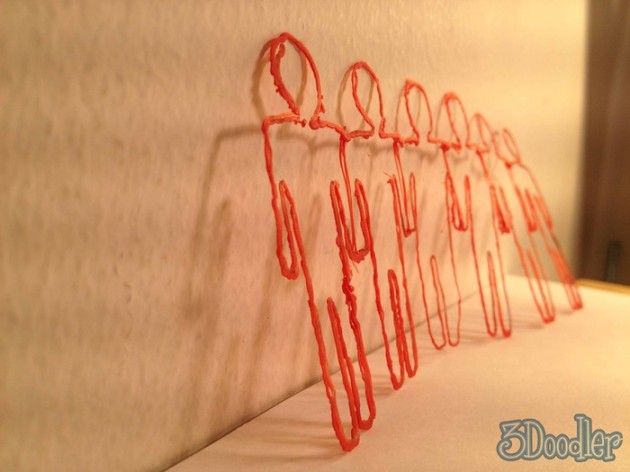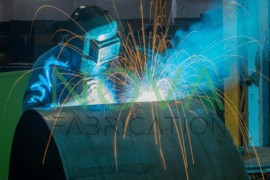Several months ago, the world was presented with the “3Doodler”—at the time, a conceptual analog device proclaimed to be the world’s first 3D printing pen. After achieving much notoriety, esteem and extensive international press coverage, the small Boston-based upstart behind the project, WobbleWorks LLC, shattered its now comparatively-modest $30,000 fundraising goal to make the device become a reality. The company ultimately earned upwards of two-million dollars in its three-month kickstarter campaign—making it one of the most successful tech fundraisers that the site has seen to date.
A Look at the Current 3D Printer Pen Landscape
While the 3Doodler is currently in production, WobbleWorks is inundated with fulfilling back-orders shipping the first run to its many kickstarter supporters. In the meantime pre-orders are being taken for the first retail run which is scheduled to ship sometime in February of 2014.
Despite the 3Doodler’s infancy in the marketplace, the device is in some ways, old news, considering its growing celebrity status and the congruent media endorsement that it has received. With all of this publicity, however, it was only a matter of time before the world began to see competition emerge, and it is that competition which will really make things interesting for the excitingly-unpredictable, yet potentially-limited, future of the 3D printer pen.
One of the main competitors for WobbleWorks and their 3Doodler, is a Swiss company, aptly called “Swiss 3D Print”. Their product, the “SwissPen” has only emerged recently, but not without a boisterous arrival, infused with all of the pride and enthusiasm that we would expect from a Swiss manufacturer. Claiming that the SwissPen “…boasts a level of production precision that rivals fine watchmaking” is a pretty hefty statement, and it is certainly one that will be difficult for WobbleWorks to contend with, based-on the 3Doodler having almost an identical price-point and being Made in China versus the SwissPen actually being Made in Switzerland.

At the moment, 3D printing pens are much more of a novelty factor than they are a useful tool for design or engineering. The precision of these devices is very-much limited to the steadiness of the user’s hand, as well as that person’s ability to mentally-render a concept and transpose their thoughts into hand-motions smooth enough to produce results. This is, of course, in addition to the user having to grow accustomed to wielding the ergonomically-awkward Dremel®-like device that makes those results possible.
The approach that WobbleWorks has taken toward branding their product is a smart one—the company is primarily marketing the tool as an arts-and-crafts toy, which at this stage in the game, it very much is. The inability of 3D printer pens to sever the extruded filament cleanly is very poor, and that is probably weakest point of the devices currently, in terms of being able to use them for most precision applications in the professional-setting. You wouldn’t want to bust one of these out in an incubator to try and impress your coworkers and clients with a live rendering of your design—they’re just too sloppy. Even if you are using a scaled template to build your design with, the outcome is still pretty crude, and let’s be real: no designer or engineer is going to be impressed with the result of your 3D pen-print after they have been studying the blueprint underneath it for the previous fifteen minutes.

At the end of the day—and some might challenge me for saying this—I feel that it is completely inaccurate to call these devices “3D Printer Pens”. To “Print” something, means to be able to produce a tangible concept with some form of predetermined accuracy and some form of proven precision. Generally, this holds the implication that you can produce many reproductions of the same object to very similar, if not identical, specifications. These pens cannot do that currently, and as long as their accuracy is entirely dependent upon the whim of the human hand, then they never will be able to. Calling these devices “3D Printer Pens” is purely a marketing move to free-load off of the growing success of the 3D printing industry—and frankly, it is misleading to the industry, despite the fact that these inexpensive devices might encourage greater interest in bona-fide 3D printing.
In theory, if I were to take a hot glue gun and adapt a CNC-machined nozzle with a heat-sink on it to replace the existing glue-gun nozzle, then I could do what a 3D printer pen does in wax instead of plastic…but would I call the result a 3D print? No. It would be a one-of-a-kind wax sculpture. If I built-up some Krazy® Glue on a baking sheet layer-by-layer and crafted a little object, could I call that a 3D print? No. It would be glue art. This is not to take-away from the cool-factor of 3D printer pens—they are indeed nifty, and could be very useful for modifying actual 3D-printed parts. But with that thought, I would like to nominate a new name for 3D printer pens: Plastic-extruding Pens, or, “PeP”…pretty catchy, right?
In Part 2 we’ll take a look at the construction of 3D Printing Pens…
(Images via WobbleWorks, LLC and Swiss 3D Print)





